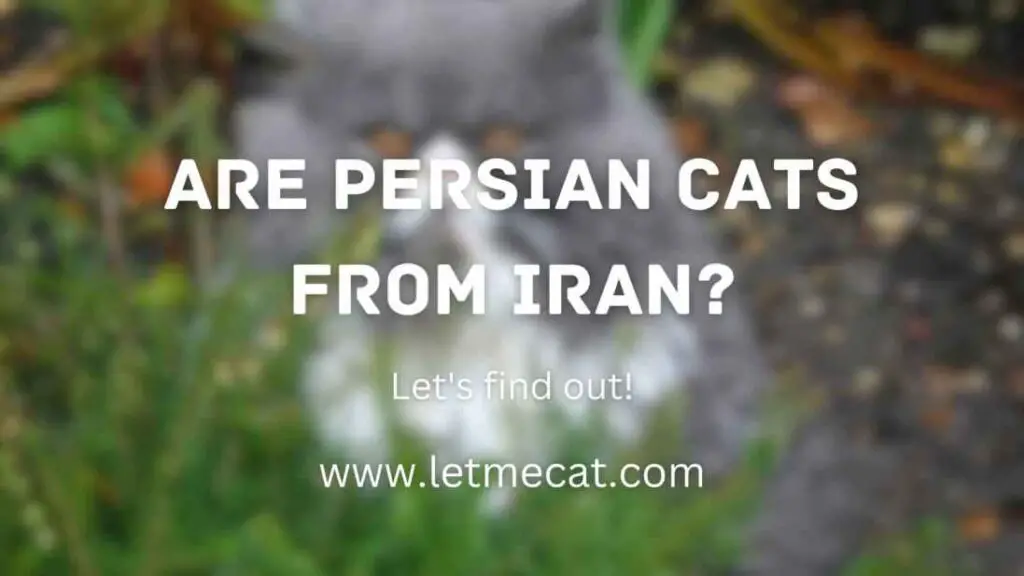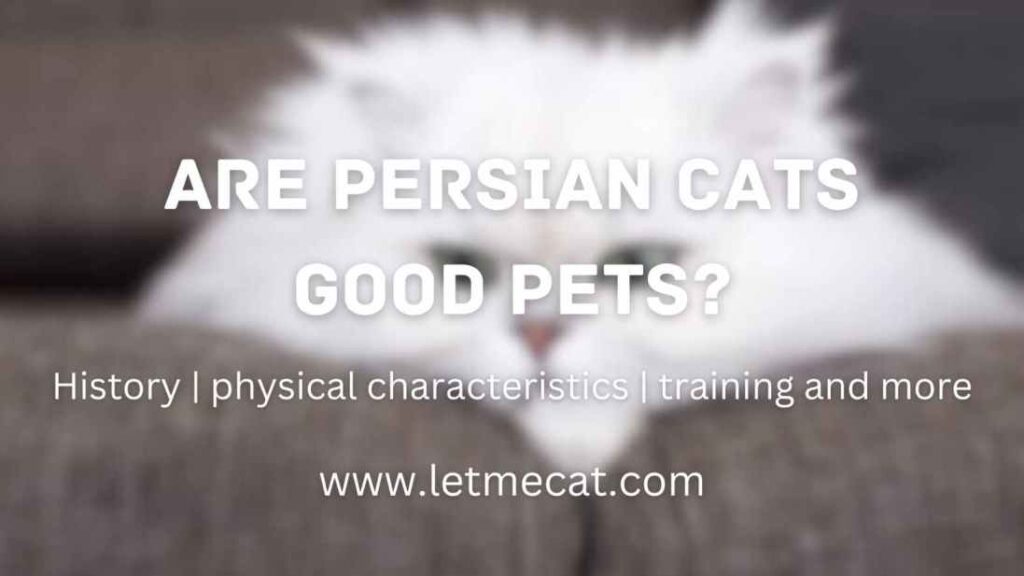When we think of Persian cats, an image of a majestic, long-haired feline with a regal demeanor often comes to mind. These elegant creatures have captivated cat lovers around the world with their beauty and calm disposition. But have you ever wondered where Persian cats actually come from?
In this article, we will delve into the origins of Persian cats, explore their characteristics and history, debunk popular myths, discuss their cultural significance, and shed light on their international popularity. So, let’s embark on a journey to discover the fascinating world of Persian cats.
1. Origins of Persian Cats
The origins of Persian cats can be traced back to ancient Persia, which is modern-day Iran. It is believed that these enchanting cats were first discovered in the high plateaus of Iran, where their long, luxurious coats protected them from harsh weather conditions.
Over time, they gained popularity and were highly regarded for their beauty and grace.
2. Characteristics of Persian Cats
Persian cats are known for their distinct features and gentle temperament. They have a round face with a short muzzle, expressive eyes, and small, rounded ears. Their most striking feature is their long, flowing coat, which requires regular grooming to maintain its lustrous appearance.
Persian cats come in a variety of colors and patterns, ranging from solid white to tortoiseshell and everything in between.
3. History of Persian Cats
The history of Persian cats is rich and fascinating. These cats were highly prized in ancient Persia and were often seen in the palaces of royalty and nobility. Their popularity spread to other parts of the world through trade routes, and they eventually gained recognition in Europe and North America.
The breeding and refinement of Persian cats continued over the years, leading to the development of different varieties and enhancing their overall beauty.
4. Breeding and Varieties
Through selective breeding, various Persian cat varieties have emerged, each with its unique characteristics. Some of the popular varieties include the Doll Face Persian, Exotic Shorthair (a short-haired variant), and the Himalayan Persian (known for its striking blue eyes).
Breeders have focused on maintaining the breed’s distinct features while also addressing health concerns to ensure the well-being of these beloved felines.
5. Popular Myths about Persian Cats
Persian cats have been surrounded by several myths over the years. One common myth is that they are aloof and unfriendly. However, contrary to popular belief, Persian cats are known for their affectionate nature and love being in the company of their human companions.
Another misconception is that they require excessive grooming. While their long coat does require regular maintenance, proper grooming practices can make it a manageable task.
6. Persian Cats in Iran
Given that Persian cats originated in Iran, it’s no surprise that they hold cultural significance in the country. These felines are highly regarded and have even been declared a national treasure of Iran.
Persian culture celebrates the beauty and grace of these cats, often portraying them in art, literature, and even traditional stories.
7. Cultural Significance
Beyond Iran, Persian cats have gained popularity worldwide and have become a symbol of elegance and luxury. Their regal appearance and gentle temperament have made them sought-after pets in many households.
These cats have inspired artists, writers, and filmmakers, further cementing their place in popular culture.
8. International Popularity
Persian cats are one of the most popular cat breeds globally. Their charm and beauty have won the hearts of countless cat lovers, making them highly sought after in the pet market.
Many cats show feature Persian cats, where stunning appearance and graceful presence never fail to capture attention.
9. Care and Maintenance
Owning a Persian cat requires specific care and maintenance due to its long coat. Regular grooming sessions, including brushing and bathing, are essential to prevent matting and keep their fur in optimal condition.
Additionally, maintaining their eye and ear hygiene is crucial for their overall well-being.
10. Health Issues
While Persian cats are generally healthy, they are prone to certain health issues. The structure of their face and short muzzle can lead to respiratory problems, and their long hair may be susceptible to matting if not properly cared for.
Responsible breeding practices and regular veterinary check-ups are vital to ensure the long-term health of these cats.
Conclusion
In conclusion, Persian cats are indeed from Iran, where they have a rich history and cultural significance. These beautiful creatures have enchanted people around the world with their elegance and gentle nature. Whether they are celebrated as national treasures or cherished pets in households, Persian cats continue to capture our hearts and remind us of the beauty and wonder that animals can bring into our lives.
Thank you so much for reading this article.




Pingback: Are Persian Cats Common In Persia? History, Challenges - Let Me Cat